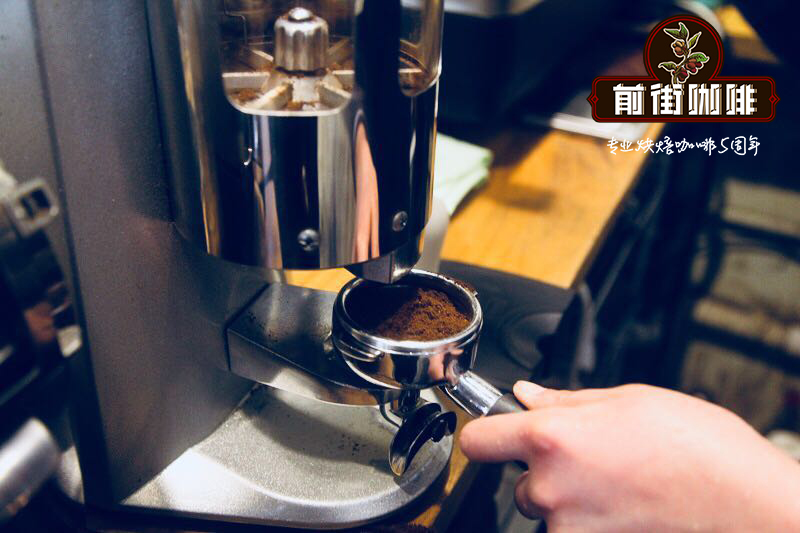Which Ethiopian coffee varieties are there? which Ethiopian coffee native species are divided into which African coffee bean varieties

Professional coffee knowledge exchange more coffee bean information please follow the coffee workshop (Wechat official account cafe_style)
In general, you can divide Ethiopian coffee varieties into two categories: JARC varieties and regional varieties.
The JARC variety was developed by the Jimma Agricultural Research Center (JARC), one of the Ethiopian Federal Agricultural Research centres, to enhance resistance to pests and increase yield. There are about 40 such varieties. The regional terrestrial species is wild coffee that grows in the forests of Ethiopia. Getu told me there could be more than 10000 of them.
This means that when consumers pick up a bag of Ethiopian coffee and see varieties described as family heirlooms, the beans come from a combination of more than 10,000 varieties.
Advantages of using specific variety names
What if buyers no longer ask for family heirlooms, but for specific varieties? There is a view that this will encourage efforts in Ethiopia to use a common coffee language and will help us better understand which varieties exist in the first place.
"if you look at the maps of Ethiopian coffee varieties published by counter-culture, Kibri, Sinde, Bedesa, Yavan, etc.," Getu said. These different regional races from the western and southwestern regions of Ethiopia have different characteristics. It tastes different.
If you tell the farmer, 'only produce land varieties in the west and southwest, he will mix all these different varieties together and will produce mixed flavors.
Therefore, identifying the variety and selling it separately may mean that the buyer will have a more accurate understanding of the specifications of each batch of products.
Getu asked coffee producers in the Guju area to start selling in batches. He said: ". In the end, we found that Kurume (a regional land species) is an amazing variety that will change the overall quality of the region. "
He hopes to identify the variety of the coffee by name and specifically market it to help small farmers get a higher premium for their coffee.
The use of variety names can also help producers in other ways. Grow a big farm with coffee, and all you know is that it's a family heirloom, which may mean you're making a big investment in plants that can't resist disease. By using variety names, producers can better understand the risks of the crops they choose.
END
Important Notice :
前街咖啡 FrontStreet Coffee has moved to new addredd:
FrontStreet Coffee Address: 315,Donghua East Road,GuangZhou
Tel:020 38364473
- Prev

Is the coffee from Ethiopia good? what are the varieties of coffee? introduction to the varieties of Ethiopian Coffee
Professional coffee knowledge exchange more information about coffee beans please follow the coffee workshop (Wechat official account cafe_style) when we mention Ethiopian coffee, we use rose fruits and magnolia to describe it. But if you want to know what particular breed produces these gorgeous notes, you are usually trapped by one word: family heirlooms. In the early days of the third wave of coffee, family heirlooms were
- Next

Introduction to the characteristics of Colombian Coffee Brand Columbia Huilan Coffee Phantom Manor
Professional coffee knowledge exchange more coffee bean information please follow the coffee workshop (Wechat official account cafe_style) front street-Colombian coffee brand Columbia Mirage Manor suntan brief introduction Coffee Story: Huila in southwestern Colombia is a producer of fine coffee, almost all of the top 10 coffee competitions in Colombia come from this producing area, and so do they.
Related
- Beginners will see the "Coffee pull flower" guide!
- What is the difference between ice blog purified milk and ordinary milk coffee?
- Why is the Philippines the largest producer of crops in Liberia?
- For coffee extraction, should the fine powder be retained?
- How does extracted espresso fill pressed powder? How much strength does it take to press the powder?
- How to make jasmine cold extract coffee? Is the jasmine + latte good?
- Will this little toy really make the coffee taste better? How does Lily Drip affect coffee extraction?
- Will the action of slapping the filter cup also affect coffee extraction?
- What's the difference between powder-to-water ratio and powder-to-liquid ratio?
- What is the Ethiopian local species? What does it have to do with Heirloom native species?

